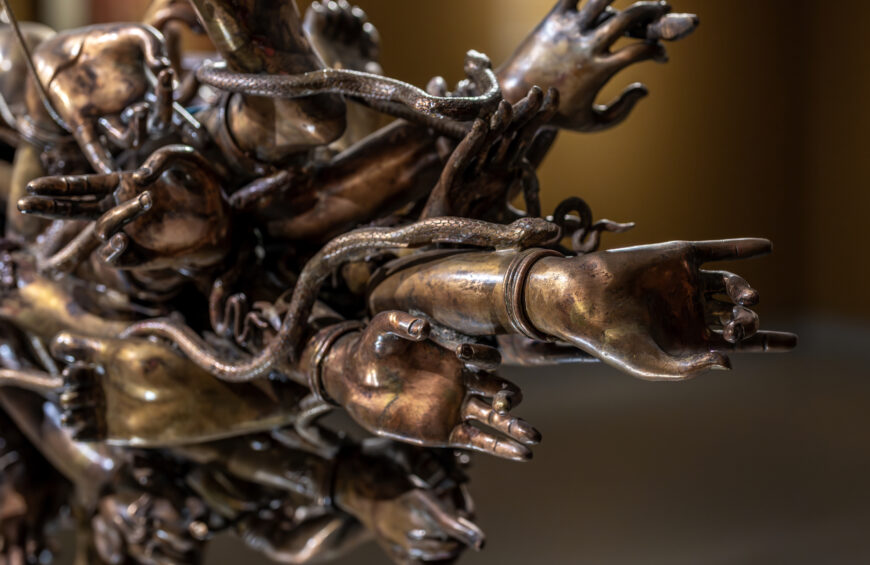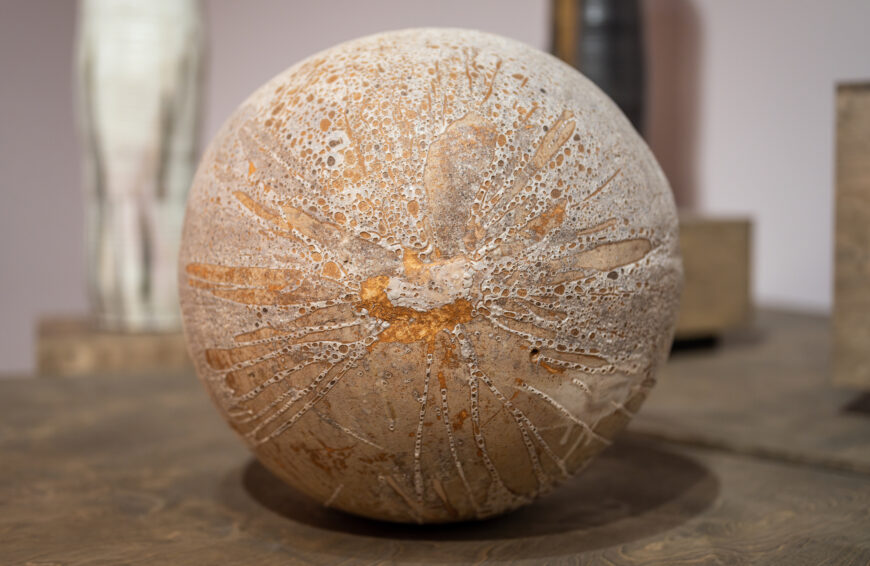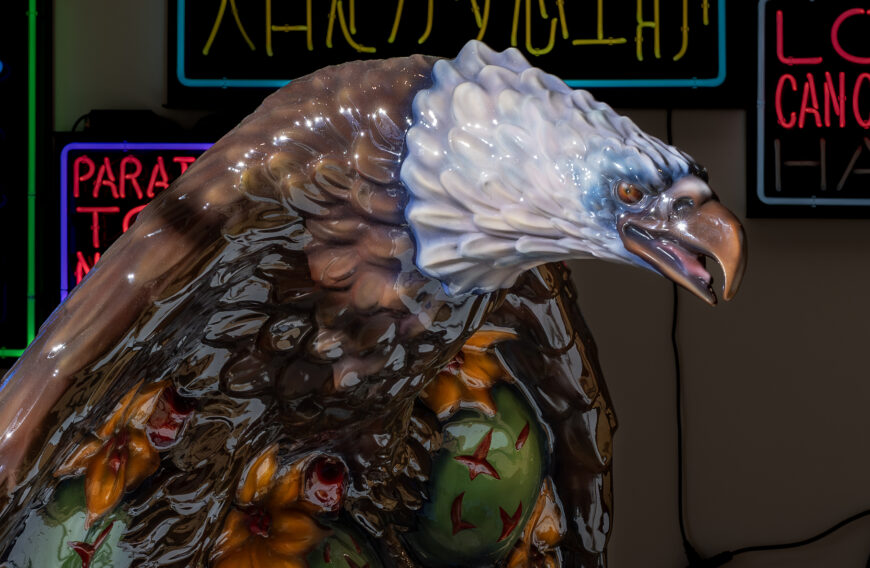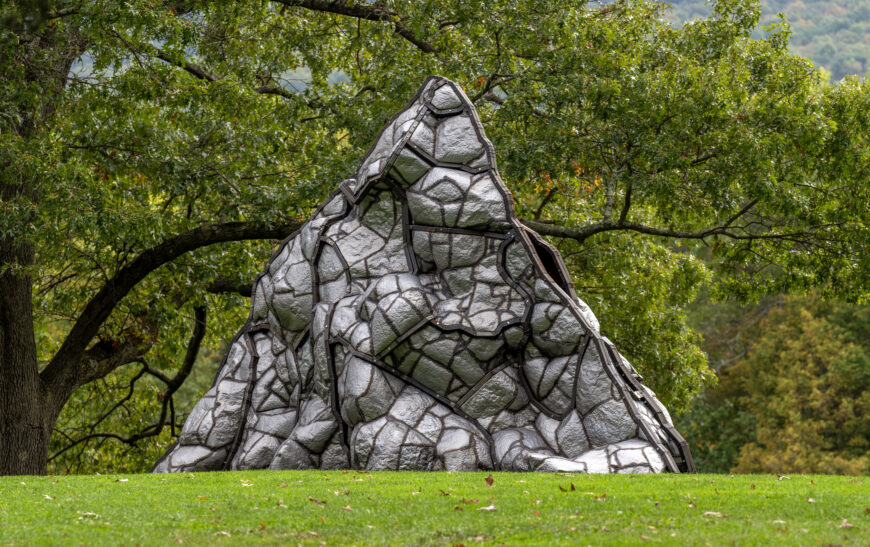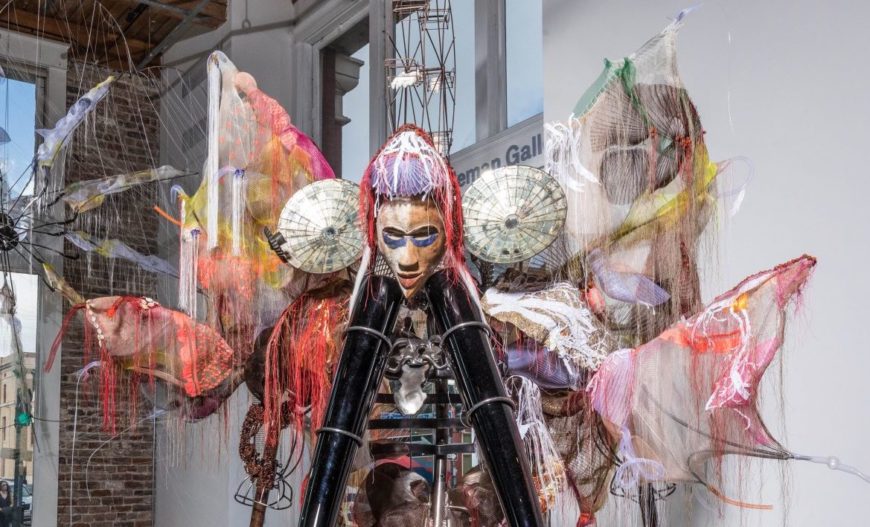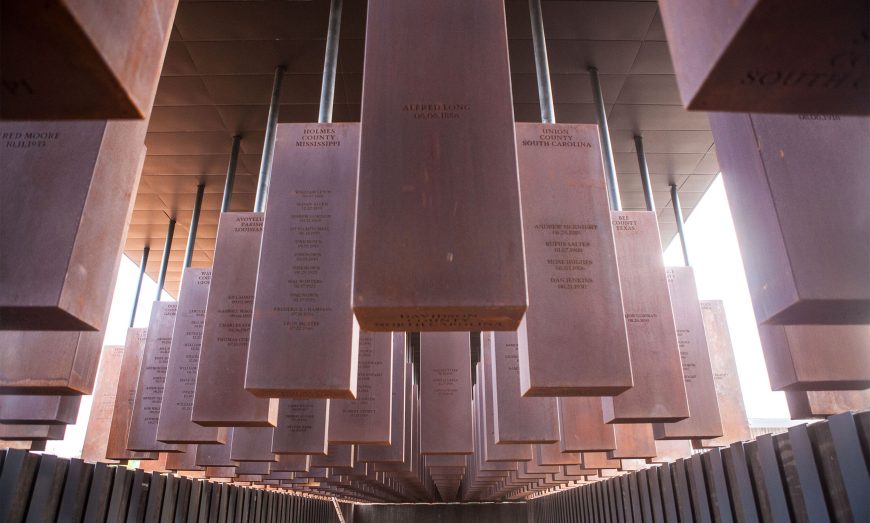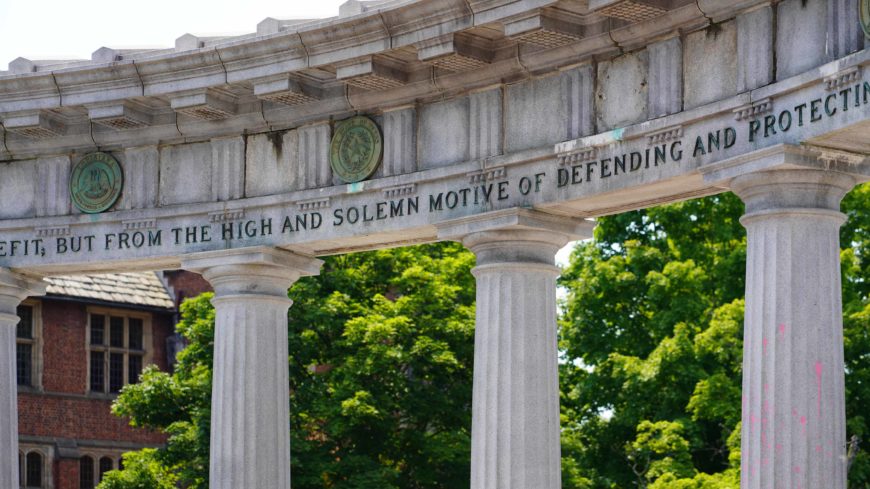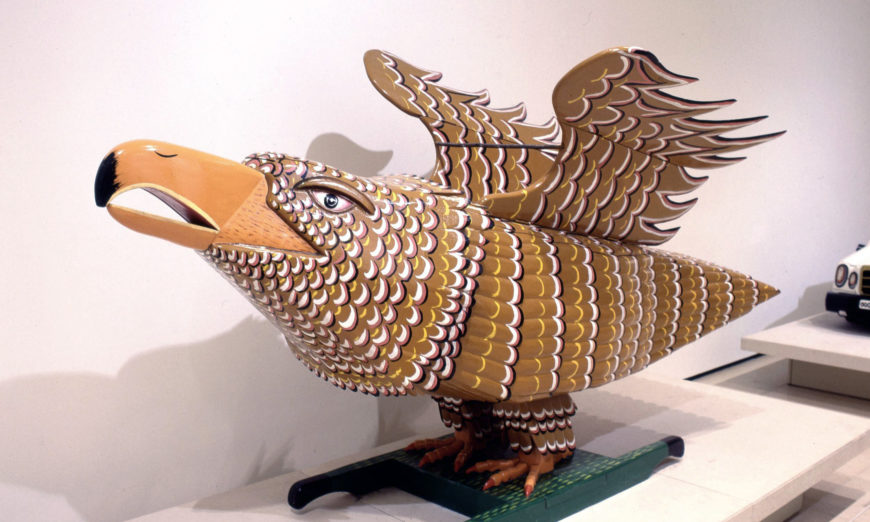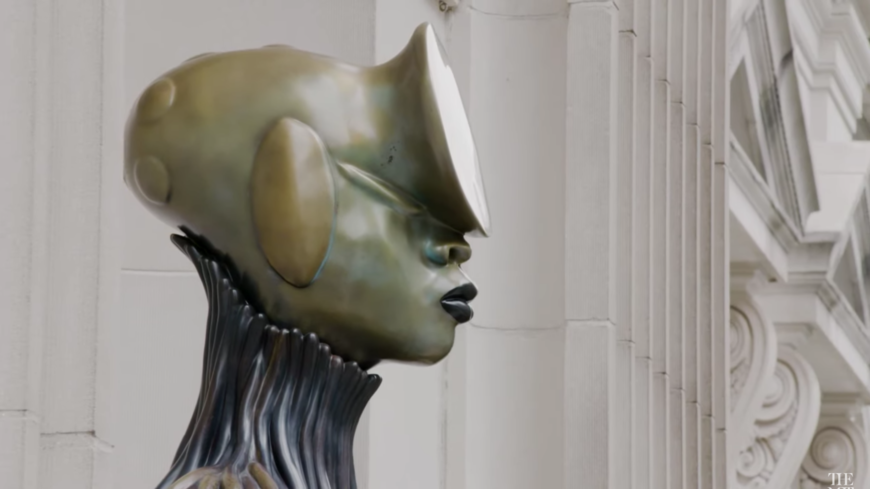Pierced with holes, this architectural sculpture offers both shelter from and exposure to the surrounding elements.
Martin Puryear, Lookout, 2023, brick, reinforced concrete, cobblestone (Storm King Art Center, New Windsor, New York) © Martin Puryear. Speakers: Dr. Beth Harris and Dr. Steven Zucker
0:00:06.3 Dr. Steven Zucker: We’re at the Storm King Art Center. We’ve just walked up a pretty steep hill, and at the top is this marvelous sculpture, which is also a kind of architecture by the artist Martin Puryear.
0:00:18.0 Dr. Beth Harris: This is such an enigmatic and contradictory sculpture, because on one hand, it is shelter. You can go inside and take shelter as many people are doing today from the rain, but it’s also pierced, so you’re not really protected from the elements. And we think about architecture as having straight walls and a flat roof. And this shape is so odd, so organic. It has a sense of leaning, of defying gravity.
0:00:49.4 Dr. Steven Zucker: The artist pointed out that architecture, at least in the Western tradition, is almost always composed of right angles. And there isn’t really a straight line in this entire structure. It’s made of brick, but even the bricks have been shaped in order to turn and create perhaps the most complex brick form I have ever seen. And as you said, the bricks are pierced by oculi, that is, by holes that are made of ceramic and that are tubes, but they’re perfectly structured so that the angles fit flush with the turn of the structure.
0:01:22.8 Dr. Beth Harris: And there’s one spot inside where you can stand, and all of these oculi align.
0:01:28.4 Dr. Steven Zucker: And it’s almost as if we’re looking up at celestial bodies, at stars above.
0:01:33.8 Dr. Beth Harris: It’s impossible for me standing here not to have two contradictory thoughts, because so many of its forms from the oculi, from the round arch that we enter through to the dome, are all borrowed from a long history of architecture. On the other hand, when put together in this way by the artist, this looks nothing like any of those forms.
0:01:57.4 Dr. Steven Zucker: It does recall ancient Greek traditions, from Tholos tombs to the dome of the Pantheon in Rome. But the artist also drew on African traditions. Nubian vaulting not only uses natural materials and is extremely well suited to the hot arid environment of the Sahel across North Africa, but it’s also remarkable in that it does not require an internal structure to be built. Usually when we build an arch, we have a wood frame that we rest against until we can put the keystone in place. But Nubian vaulting uses the light and adhesive nature of wet mud brick to be able to quickly construct quite stable open spaces. But in this case, Puryear was concerned about permanence. And so not only is he using bricks that have been fired, but he’s also created a concrete and steel structure that is sandwiched between two layers of bricks in order to make sure that this structure lasts for a very long time.
0:02:51.5 Dr. Beth Harris: When we think about the history of architecture and round arches and domes, we think about an attempt to represent the idea of the heavens. There’s always the connotation of the divine, of the heavenly, and it often also expresses the ambitions of a ruler. And with those historic domes, there’s a sense of great stability. But here there’s a sense of instability, of movement, of something that I could almost tip and push over.
0:03:22.3 Dr. Steven Zucker: It feels almost organic to me. It feels almost as if it might move and change and shift. And yet, when you stand in the center, aligned with all of the oculi, and you turn around and you look out at this beautiful valley that’s laid out below, and of course the title of this work is Lookout, you do feel sheltered, you do feel embraced.
0:03:44.0 Dr. Beth Harris: But the curvature of the walls are also unsettling and disturbing and make one feel uncertain on one’s feet. So that play between stability and instability.
0:03:56.8 Dr. Steven Zucker: This is an artist who reuses certain kinds of forms, forms that have important associations throughout his career. He refines them, rethinks them, changes the context and the materials. He’s been interested in domes, but he’s also been interested in something called a Phrygian cap, which this seems to reference as well. That is a kind of headwear that became a symbol of slaves that had become freed in ancient Rome. It’s a hat that was symbolically picked up during the 18th century by the French. In fact, in the famous painting by Delacroix, Liberty Leading the People, the personification of liberty is wearing a Phrygian cap. And here we see a structure that feels almost as if it is soft, like a cap. And although it’s not pointed in the way that a Phrygian cap is, it has the general shape.
0:04:45.9 Dr. Beth Harris: Something which suggests, through its association with the Phrygian cap, ideas of freedom, and something that’s also sheltering but open. This is a work that’s so filled with so many contradictions.


